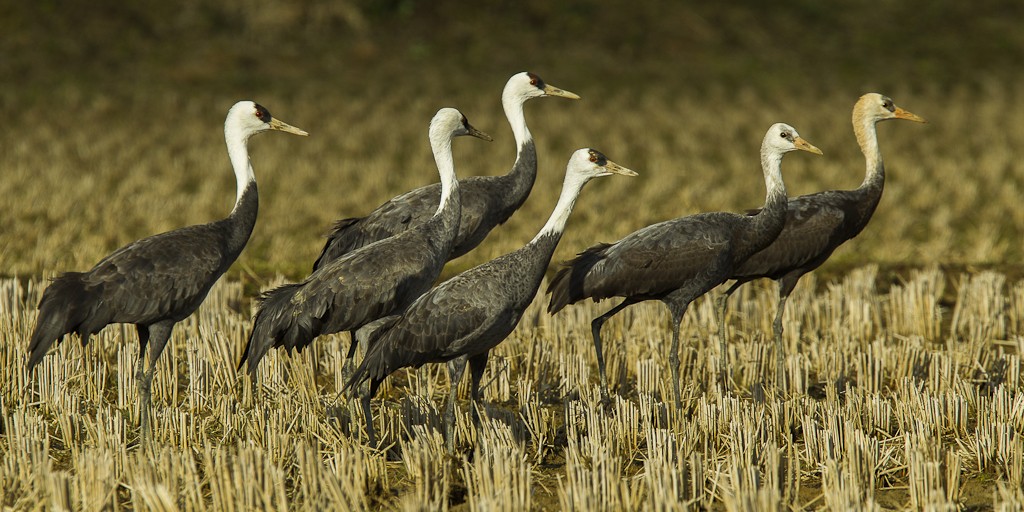Hooded Crane
A species of Cranes Scientific name : Grus monacha Genus : Cranes
Hooded Crane, A species of Cranes
Botanical name: Grus monacha
Genus: Cranes
Content
Description General Info
 Photo By Francesco Veronesi , used under CC-BY-SA-2.0 /Cropped and compressed from original
Photo By Francesco Veronesi , used under CC-BY-SA-2.0 /Cropped and compressed from original Description
The hooded crane (Grus monacha) is a small, dark crane. It has a grey body. The top of the neck and head is white, except for a patch of bare red skin above the eye. It is one of the smallest cranes, but is still a fairly large bird, at 1 m (3.3 ft) long, a weight of 3.7 kg (8.2 lbs) and a wingspan of 1.87 m (6.2 ft). The hooded crane breeds in south-central and south-eastern Siberia. Breeding is also suspected to occur in Mongolia. Over 80% of its population winters at Izumi, southern Japan. There are also wintering grounds in South Korea and China. There are about 100 hooded cranes wintering in Chongming Dongtan, Shanghai every year. Dongtan Nature Reserve is the largest natural wintering site in the world. In December 2011, a hooded crane was seen overwintering at the Hiwassee Refuge in southeastern Tennessee, well outside its normal range. In February 2012, one was seen at Goose Pond in southern Indiana, and is suspected to be the same bird, which may have migrated to North America by following sandhill cranes. In April, 2020 one was shot by local hunters in Malakand, Pakistan. It was accepted as a valid record as the first confirmed specimen for the Indian Subcontinent. The estimated population of the species is 11,600 individuals. The major threats to its survival are wetland loss and degradation in its wintering grounds in China and South Korea as a result of reclamation for development and dam building. Conservation activities have been taken since 2008. Local universities, NGOs and communities are working together for a better and safer wintering location. The hooded crane is evaluated as Vulnerable on the IUCN Red List of Threatened Species. It is listed on Appendix I and II of CITES. A society, Grus monacha International Aid (白头鹤的故事), has been formed to find ways to protect the species. 
Size
1 m
Life Expectancy
24 years
Nest Placement
Ground
Feeding Habits
Hooded Crane predominantly feeds on aquatic plants, insects, frogs, and salamanders, complementing their diet with berries, rice, and waste cereal grains. They forage in wetlands, showing a preference for seeds, grains, and winter rhizomes.
Habitat
The hooded Crane is typically found in a variety of wetland habitats including isolated bogs, higher altitude forested wetlands, open wetlands, and grasslands. They adapt to different seasonal environments, utilizing rice paddies, shores of rivers, shallow lakes, grassy marshes, and agricultural fields during winter. These birds occupy broader geographical regions that feature both breeding and non-breeding habitats distinguished by the presence of specific vegetation like larch trees in some of their breeding ranges.
Dite type
Omnivorous
General Info
Feeding Habits
Bird food type
Species Status
VULNERABLE. CITES I. The breeding range extends across south-central and south-eastern Siberia, Russia. More recently (early 1990s) discovered breeding, in... read more